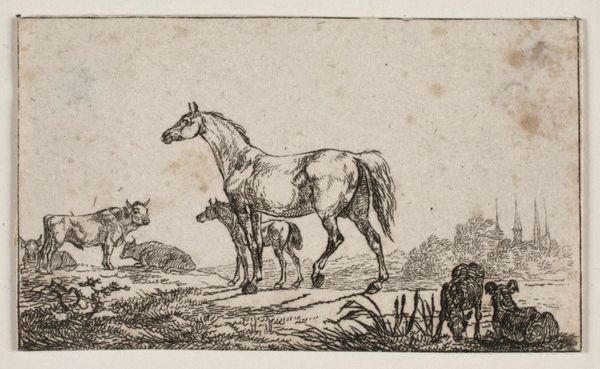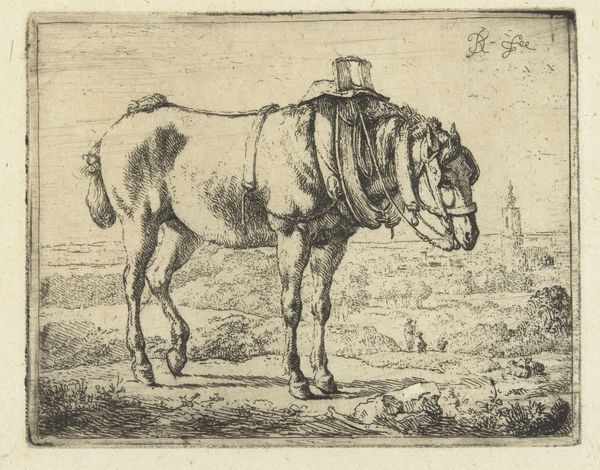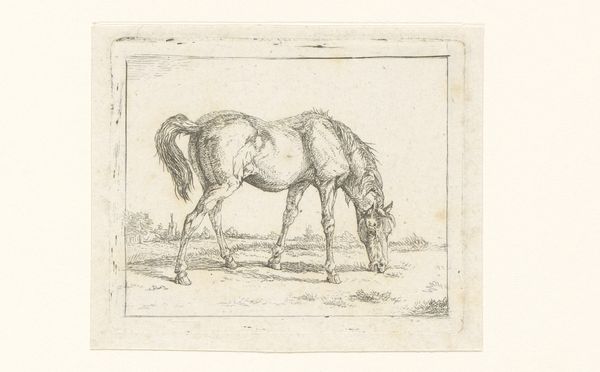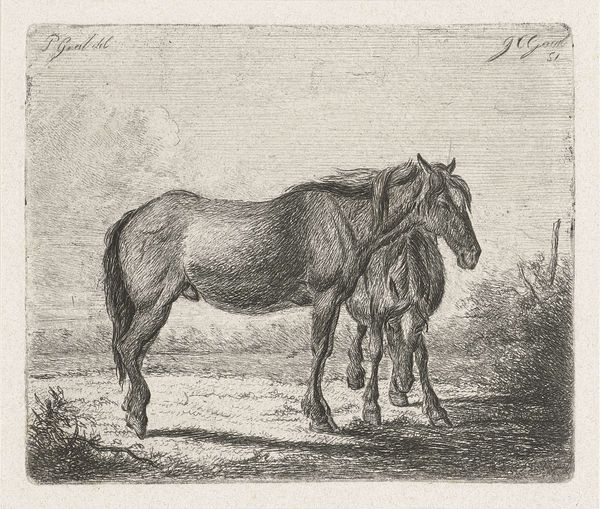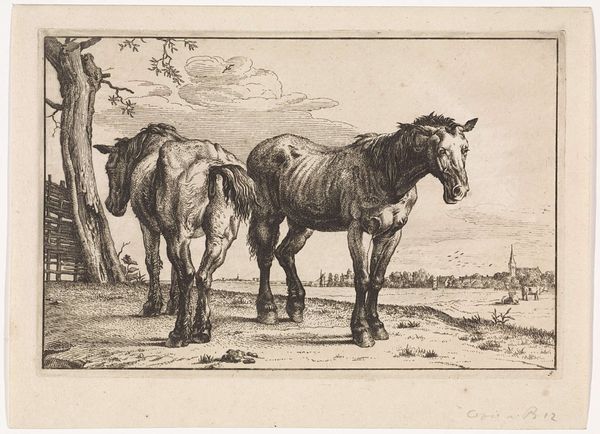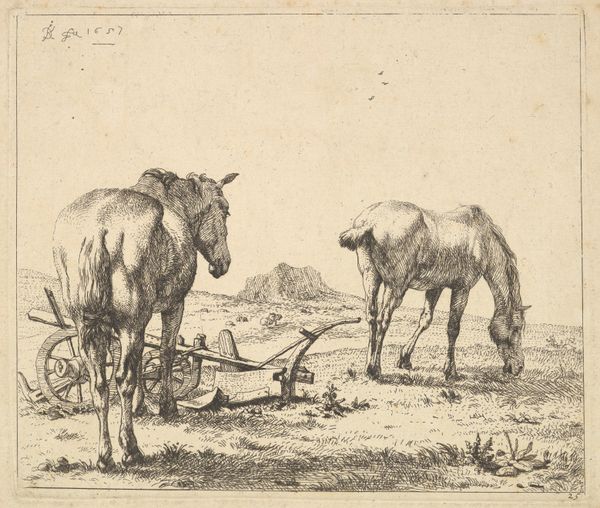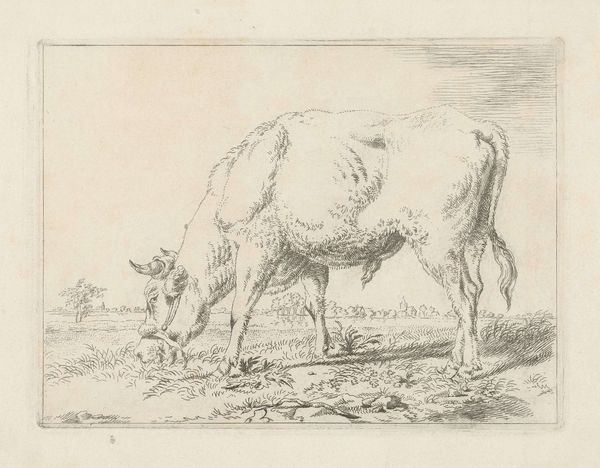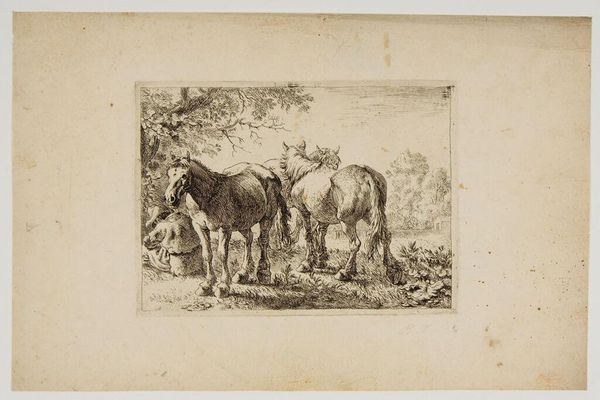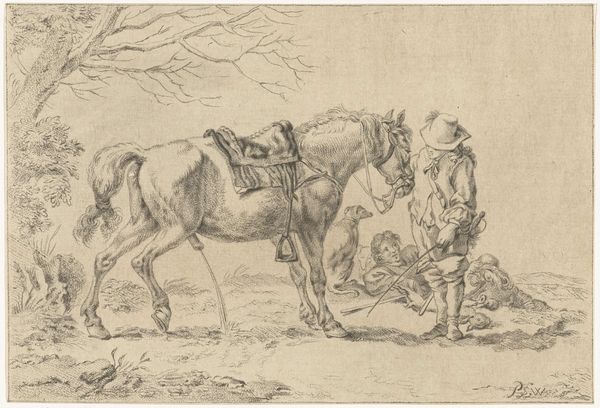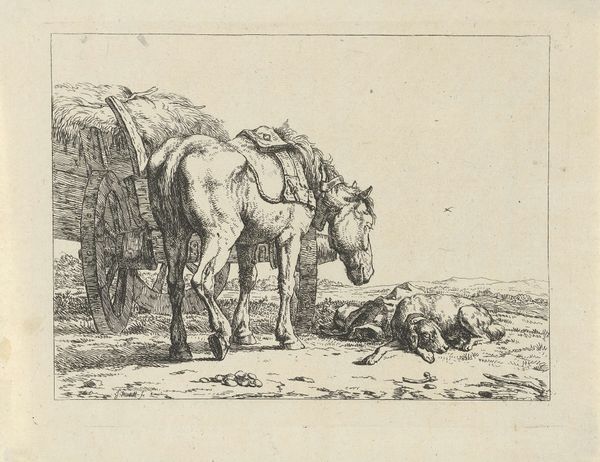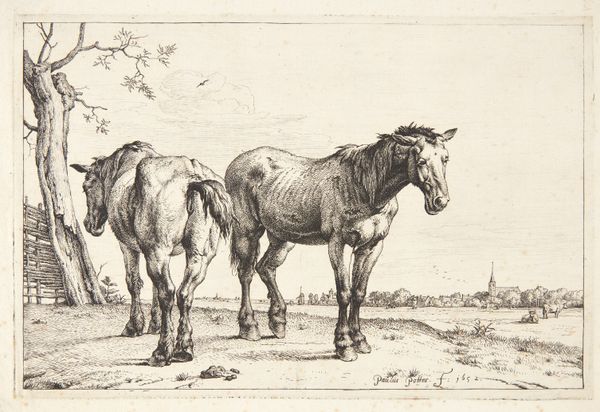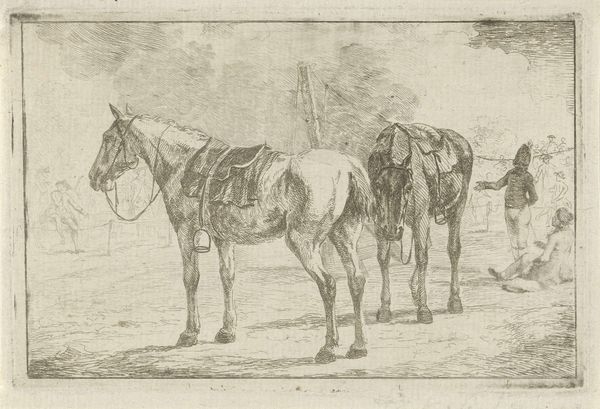
drawing, print, etching, paper
#
drawing
#
animal
#
dutch-golden-age
# print
#
etching
#
landscape
#
paper
#
romanticism
#
realism
Dimensions: height 91 mm, width 119 mm
Copyright: Rijks Museum: Open Domain
Editor: Here we have "Gezadeld paard vastgebonden aan een paal," or "Saddled horse tied to a pole," by Jacob van Strij, made between 1766 and 1815. It's an etching, and on initial viewing, the scene evokes a sense of quiet, almost melancholic, stillness. What does this scene say to you? Curator: That's a wonderful starting point. Given the historical context, late 18th and early 19th century, and considering Van Strij's connection to the Dutch Golden Age tradition and Romanticism, this seemingly simple depiction of a horse invites questions about social order and shifting perspectives on nature. What role do you think animal depictions play in asserting cultural values or national identity at the time? Editor: Well, you see images of working animals throughout this period. The horse is saddled but still tied; it suggests domestication and control, but the landscape hints at a wilder, less tamed reality. Curator: Exactly. The Romanticism influence encourages an emotional response to nature. While the horse symbolizes utility, its placement in the composition highlights a dependence. Think about the rising middle class and their shifting relationship with rural life during that era. Does the image hint at tensions between agrarian traditions and the emergence of urban life? Editor: That tension is definitely there. Is this simply a portrait of a horse, or is it representing this transformation? The artist has even framed the whole image, reinforcing a need for clearly defined boundaries. Curator: Precisely. The 'frame within a frame’ compels the viewer to consider those artificial limits. To me, the piece makes us ponder the public function of these works and who their target demographic was. What do you take away from the fact that this is an etching, so relatively reproducible, and made on paper? Editor: It was likely to have wider circulation! This art becomes more accessible. It definitely alters how the narrative of land and ownership is approached. It's a powerful way to spread social messages in the absence of our instant, global communication. Curator: I think you've brought a wonderful perspective, underlining the impact of socio-political change during this interesting period! Editor: I never thought of it that way. Thanks!
Comments
No comments
Be the first to comment and join the conversation on the ultimate creative platform.
